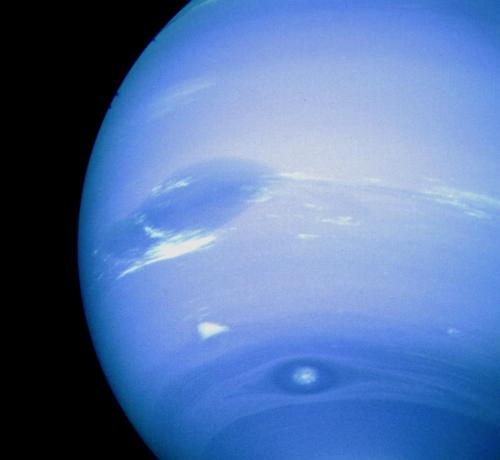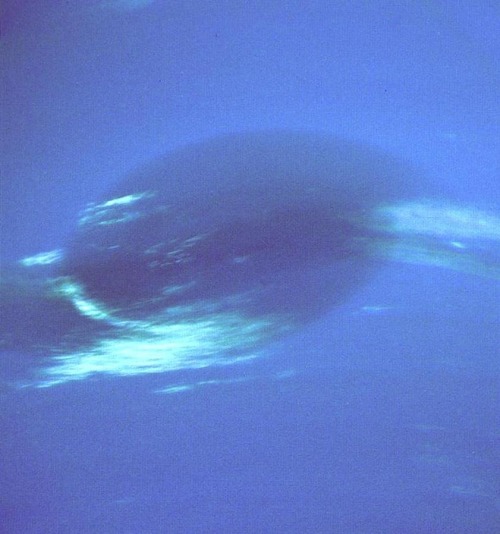Na Madrugada De 12 Para 13 De Agosto De 2015, A Chuva De Meteoros Dos Perseidas Atinge O Seu Máximo.
Na madrugada de 12 para 13 de Agosto de 2015, a Chuva de Meteoros dos Perseidas atinge o seu máximo. Os grãos de rocha congelada riscaram o céu enquanto eles evaporam durante a sua entrada na atmosfera da Terra. Esses grãos foram expelidos pelo Cometa Swift-Tuttle. As Perseidas, ou os Perseidas, nunca sei como chamar, resultam da passagem anual da Terra através da órbita do Cometa Swift-Tuttle, e normalmente é a chuva mais ativa do ano. Embora seja difícil prever o nível de atividade de qualquer chuva de meteoros, numa noite de céu claro e escuro um observador pode ver um meteoro por minuto. A chuva das Perseidas, esse ano acontece um pouco antes da Lua Nova e com um céu relativamente escuro deve fazer com que até mesmo os meteoros mais apagados sejam visíveis. As chuvas de meteoros, em geral, são melhor de serem observadas de uma posição relaxada, usando uma cadeira de praia, longe das luzes das cidades. A imagem acima, e o gif animado abaixo, mostra um meteoro explodindo a duas semanas atrás acima da Áustria, bem perto da faixa central da Via Láctea.
Fonte:
http://apod.nasa.gov/apod/ap150812.html
|firstTV�Wu+
More Posts from Carlosalberthreis and Others

26 de Abril de 2016 começa com Lua, planeta Saturno, planeta Marte, estrela Antares e chuva de meteoros Alfa-Escorpídeas. Um começo celeste bastante comemorativo! (em Parintins)
Feliz Aniversário, Mãe!
Feliz Aniversário, Mãe! Sempre vou estar ao seu lado, independente das situações em que a vida nos impõe! 🎂🎂🎂🎂🎂🎉🎉🎉🎉🎉🎈🎈🎈🎈🎈



This photograph of Neptune was reconstructed from two images taken by Voyager 2’s narrow-angle camera, through the green and clear filters. At the north (top) is the Great Dark Spot, accompanied by bright, white clouds that undergo rapid changes in appearance.
Credit: NASA
Solar System: 10 Things to Know This Week
January 8: Images for Your Computer or Phone Wallpaper
Need some fresh perspective? Here are 10 vision-stretching images for your computer desktop or phone wallpaper. These are all real pictures, sent recently by our planetary missions throughout the solar system. You’ll find more of our images at solarsystem.nasa.gov/galleries, images.nasa.gov and www.jpl.nasa.gov/spaceimages.
Applying Wallpaper: 1. Click on the screen resolution you would like to use. 2. Right-click on the image (control-click on a Mac) and select the option ‘Set the Background’ or 'Set as Wallpaper’ (or similar).
1. The Fault in Our Mars

This image from our Mars Reconnaissance Orbiter (MRO) of northern Meridiani Planum shows faults that have disrupted layered deposits. Some of the faults produced a clean break along the layers, displacing and offsetting individual beds.
Desktop: 1280 x 800 | 1600 x 1200 | 1920 x 1200 Mobile: 1440 x 2560 | 1080 x 1920 | 750 x 1334
2. Jupiter Blues

Our Juno spacecraft captured this image when the spacecraft was only 11,747 miles (18,906 kilometers) from the tops of Jupiter’s clouds – that’s roughly as far as the distance between New York City and Perth, Australia. The color-enhanced image, which captures a cloud system in Jupiter’s northern hemisphere, was taken on Oct. 24, 2017, when Juno was at a latitude of 57.57 degrees (nearly three-fifths of the way from Jupiter’s equator to its north pole) and performing its ninth close flyby of the gas giant planet.
Desktop: 1280 x 800 | 1600 x 1200 | 1920 x 1200 Mobile: 1440 x 2560 | 1080 x 1920 | 750 x 1334
3. A Farewell to Saturn

After more than 13 years at Saturn, and with its fate sealed, our Cassini spacecraft bid farewell to the Saturnian system by firing the shutters of its wide-angle camera and capturing this last, full mosaic of Saturn and its rings two days before the spacecraft’s dramatic plunge into the planet’s atmosphere on Sept. 15, 2017.
Desktop: 1280 x 800 | 1600 x 1200 | 1920 x 1200 Mobile: 1440 x 2560 | 1080 x 1920 | 750 x 1334
4. All Aglow

Saturn’s moon Enceladus drifts before the rings, which glow brightly in the sunlight. Beneath its icy exterior shell, Enceladus hides a global ocean of liquid water. Just visible at the moon’s south pole (at bottom here) is the plume of water ice particles and other material that constantly spews from that ocean via fractures in the ice. The bright speck to the right of Enceladus is a distant star. This image was taken in visible light with the Cassini spacecraft narrow-angle camera on Nov. 6, 2011.
Desktop: 1280 x 800 | 1600 x 1200 | 1920 x 1200 Mobile: 1440 x 2560 | 1080 x 1920 | 750 x 1334
5. Rare Encircling Filament

Our Solar Dynamics Observatory came across an oddity this week that the spacecraft has rarely observed before: a dark filament encircling an active region (Oct. 29-31, 2017). Solar filaments are clouds of charged particles that float above the Sun, tethered to it by magnetic forces. They are usually elongated and uneven strands. Only a handful of times before have we seen one shaped like a circle. (The black area to the left of the brighter active region is a coronal hole, a magnetically open region of the Sun).
Desktop: 1280 x 800 | 1600 x 1200 | 1920 x 1200 Mobile: 1440 x 2560 | 1080 x 1920 | 750 x 1334
6. Jupiter’s Stunning Southern Hemisphere

See Jupiter’s southern hemisphere in beautiful detail in this image taken by our Juno spacecraft. The color-enhanced view captures one of the white ovals in the “String of Pearls,” one of eight massive rotating storms at 40 degrees south latitude on the gas giant planet. The image was taken on Oct. 24, 2017, as Juno performed its ninth close flyby of Jupiter. At the time the image was taken, the spacecraft was 20,577 miles (33,115 kilometers) from the tops of the clouds of the planet.
Desktop: 1280 x 800 | 1600 x 1200 | 1920 x 1200 Mobile: 1440 x 2560 | 1080 x 1920 | 750 x 1334
7. Saturn’s Rings: View from Beneath

Our Cassini spacecraft obtained this panoramic view of Saturn’s rings on Sept. 9, 2017, just minutes after it passed through the ring plane. The view looks upward at the southern face of the rings from a vantage point above Saturn’s southern hemisphere.
Desktop: 1280 x 800 | 1600 x 1200 | 1920 x 1200 Mobile: 1440 x 2560 | 1080 x 1920 | 750 x 1334
8. From Hot to Hottest

This sequence of images from our Solar Dynamics Observatory shows the Sun from its surface to its upper atmosphere all taken at about the same time (Oct. 27, 2017). The first shows the surface of the sun in filtered white light; the other seven images were taken in different wavelengths of extreme ultraviolet light. Note that each wavelength reveals somewhat different features. They are shown in order of temperature, from the first one at about 11,000 degrees Fahrenheit (6,000 degrees Celsius) on the surface, out to about 10 million degrees in the upper atmosphere. Yes, the sun’s outer atmosphere is much, much hotter than the surface. Scientists are getting closer to solving the processes that generate this phenomenon.
Desktop: 1280 x 800 | 1600 x 1200 | 1920 x 1200 Mobile: 1440 x 2560 | 1080 x 1920 | 750 x 1334
9. High Resolution View of Ceres

This orthographic projection shows dwarf planet Ceres as seen by our Dawn spacecraft. The projection is centered on Occator Crater, home to the brightest area on Ceres. Occator is centered at 20 degrees north latitude, 239 degrees east longitude.
Desktop: 1280 x 800 | 1600 x 1200 | 1920 x 1200 Mobile: 1440 x 2560 | 1080 x 1920 | 750 x 1334
10. In the Chasm

This image from our Mars Reconnaissance Orbiter shows a small portion of the floor of Coprates Chasma, a large trough within the Valles Marineris system of canyons. Although the exact sequence of events that formed Coprates Chasma is unknown, the ripples, mesas, and craters visible throughout the terrain point to a complex history involving multiple mechanisms of erosion and deposition. The main trough of Coprates Chasma ranges from 37 miles (60 kilometers) to 62 miles (100 kilometers) in width.
Desktop: 1280 x 800 | 1600 x 1200 | 1920 x 1200 Mobile: 1440 x 2560 | 1080 x 1920 | 750 x 1334
Explore and learn more about our solar system at: solarsystem.nasa.gov/.
Make sure to follow us on Tumblr for your regular dose of space: http://nasa.tumblr.com.











Halo (optical phenomenon)
Halo is the name for a family of optical phenomena produced by light interacting with ice crystals suspended in the atmosphere. Halos can have many forms, ranging from colored or white rings to arcs and spots in the sky. Many of these are near the Sun or Moon, but others occur elsewhere or even in the opposite part of the sky. Among the best known halo types are the circular halo (properly called the 22° halo), light pillars and sun dogs, but there are many more; some of them fairly common, others (extremely) rare.
The ice crystals responsible for halos are typically suspended in cirrus or cirrostratus clouds high (5–10 km, or 3–6 miles) in the upper troposphere, but in cold weather they can also float near the ground, in which case they are referred to as diamond dust. The particular shape and orientation of the crystals are responsible for the type of halo observed. Light is reflected and refracted by the ice crystals and may split up into colors because of dispersion. The crystals behave like prisms and mirrors, refracting and reflecting light between their faces, sending shafts of light in particular directions.
source
images: x, x, x, x, x, x, x, x, x, x






Other “ solar systems ”. The Milky Way has an average of 200 to 400 billion stars, not all stars have a planet around them, but others could have could have at least one planet around them or even more, could have two, four, eight , or more… now imagine the diversity of these worlds, all this is only in the Milky Way… Do you believe there is life out there?
Image credit: NASA/JPL; Tiago Campante / Peter Devine.

❝Sou o povo a triunfar
Sou a força popular
Sou raiz, tradição e saber
A festa do meu boi bumbá❞

Pôr da Lua no Pôr do Sol! 🌙☀️
📅 Data de registro: 5 de agosto de 2024 às 18:23
-
 sweetlittlepistol reblogged this · 9 years ago
sweetlittlepistol reblogged this · 9 years ago -
 carlosalberthreis reblogged this · 9 years ago
carlosalberthreis reblogged this · 9 years ago -
 carlosalberthreis liked this · 9 years ago
carlosalberthreis liked this · 9 years ago -
 astroimages reblogged this · 9 years ago
astroimages reblogged this · 9 years ago

